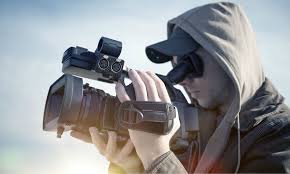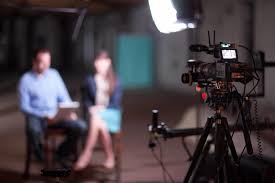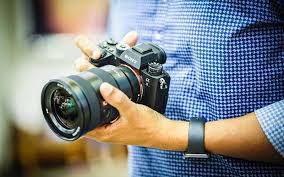Reasons To Hire Party Planner For Kids Party
That’s why you should consider hiring a party planner to plan your kid’s next bash. Many people think of party planners as something people do for weddings or large events, but here are 5 reasons why hiring a party planner for your kid’s party might just be the best thing you ever did for your sanity.
Reason #1: Hiring a party planner saves you time
One of the biggest headaches when it comes to throwing a party for your child is the time it takes to plan and execute the whole event.
From the planning to the shopping to the decorating…let’s face it — that’s all time you could better spend doing something else, like spending quality time with your family.
Reason #2: Hiring a party planner can save you money
Believe it or not, one of the biggest misconceptions about hiring a party planner for your kid’s party is that it will cost you more. People think that hiring a planner will cost a lot more than doing it themselves, but that’s just not true.
When you hire a party planner, you’ll be able to talk about your budget, and you don’t have to worry about going over budget. Their job is to give you the best possible party for the amount you want to spend, and with a party planner, you get more bang for your buck. Party planners often get industry discounts from vendors, retailers, and service providers, and they are able to pass some of those savings on to you.
Not to mention that many party planners own their own equipment such as popcorn machines, hot dog makers, and karaoke machines. You can have extras like that built into the cost of your party for a far better price than if you were to rent them yourself from a vendor.
Oftentimes, a party planner can save you up to 40% off what it might normally cost you for the same party!
Reason #3: You will have a better looking party
Party planners are experts. They’ll think of decor details that you might not even have known to think about, such as an awesome theme, a centerpiece that will wow your child’s friends (and their parents!), games, snacks, and the perfect goodie bag. They know how to arrange furniture in a way that invites more interaction and fun, the best place to put a snack bar or party favor table, and which to hang: streamers or a custom-made banner (or both).
This professionalism and attention to detail will make a party that looks amazing (which makes you look good!)
Reason #4: Hiring a party planner = less stress on you
Speaking of details, which scenario sounds better:
- On the day of the party, you’re scrambling around, picking up a few last-minute things for party favors before you stop by the bakery to pick up the cake. Then you get home and have to move furniture, set up some extra chairs, decorate the centerpiece table, fill said goodie bag, bake cookies, set out snacks, cue up a music playlist, call your best friend to beg her to pick up the extra bag of ice that you forgot (oops!), get ready, get your kid ready, then put on a smile and play “happy hostess” when the doorbell rings, trying your best not to show the other parents what a frazzled mess you are inside OR…
- Answer the phone when your party planner calls to let you know she’s on her way and asks if there’s anything you need her to pick up for you. Once she arrives, you open the door (already dressed and ready), relieved to see a professional who is cool, calm, and collected. She smiles and hands you a cake that looks like a million bucks as she encourages you to relax and pour yourself a cup of coffee (or wine…no judgment!) while she brings in the decorations and everything she needs to set up the party for you. She sets everything up (beautifully, by the way), giving you plenty of time to get your child ready. As your guests start to arrive, your party planner also acts as hostess (if you want), and greets the guests, explains where everything is, and encourages them to let her know if they need anything while you’re able to mingle with the parents and play with the children. In other words, you get to be a participant instead of a host or hostess. Once the party is over, like magic, the decorations come down and are whisked away, the place is cleaned up, and you’re left feeling like you should have hired a party planner years ago!
Reason #5: Your child will have more fun
Quite simply, a party planner knows through experience what will be a hit with party guests, young and old. When you hire a party planner to put together your child’s next party, they will go to great lengths to make sure that your child’s friends have a blast and that your child feels like a superstar.
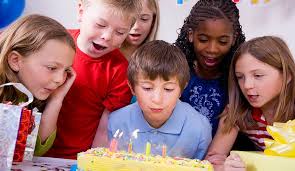
How to plan a birthday pool party?
If you’re looking to plan a birthday party, be it for kids or for adults, there are some boxes you have to tick if you want it to be a smashing success:
- Guest list – First things first, you need to plan who you’re going to invite.
- Invitations – Next up, you should write, print, or make the invitations. Leave some more time for it if you plan on making creative invitations, like floatie invitations, and always make a couple of additional invitations, just in case.
- Fun drinks – Try to make the drinks stations pop by making fun and unusual drinks for the kids to enjoy.
- Snack spread – Where there are drinks, there should be food too, especially at a birthday party. Try to make bite-size snacks, so kids can eat them on the fly.
- Floats – Never forget pool floats, be they regular, or giant ones. They’re all the rage!
- Music – Make sure to place the speakers around the pool, so that kids can enjoy their favorite music. Just remember to take all the safety precautions.
- Playlist – Speaking about favorite music, make sure to check with your kid what’s hot currently, so you can play the right tunes.
- Protection section – Make sure to plan for every occasion. Setting up a place where kids can apply sunscreen is really important.
- Coziness – Try to set up cozy places to sit all around the pool. All the better if they’re waterproof.
- Phone cases – Waterproof, you say? Well, then, get some waterproof phone cases, so you can document even the underwater moments.
- Games & activities – Make sure to plan lots of fun and interesting games and activities for the youngsters.
- Pests – Coming back to precautions, make sure you take every measure against pesky pests coming to your birthday pool party.
- Nighttime? – Finally, if you’re feeling really adventurous and if the kids are a bit older, why not make it a nighttime pool party?
What to bring to a birthday pool party?
If you’re either taking or chaperoning your kids to a birthday pool party, it’s normal and courteous of you to think about what you should bring to it. However, the answer to this question is rather easy, as you should only think about bringing
- Food – Food is always welcome at birthday parties as there can never be enough snacks. If you’re feeling adventurous, make it water-themed food and you’re golden.
- Drinks – Also, why not make some refreshing drinks to bring to the party as well? A pitcher of an unusual beverage will not go unnoticed.
On the other hand, if you’re worried about what your child should bring to a birthday pool party, think about the following:
- Sunglasses – The first part of sun protection, sunglasses are a must for any pool party.
- Sunscreen – The second part of sun protection, give your kid some sunscreen to bring, in case there’s no sunscreen station at the party.
- Towel – Never let your kid go to a birthday pool party without a towel.
- Floatie – Yes, there are probably floaties at the party, but one more can’t hurt.
- Change of clothing – Finally, never forget to bring a change of clothing for your kids.

Planning Party Basics
Pick a theme with your child. Though it may seem unnecessary, having a theme will help you know what decorations to buy, what food to prepare, and what games to plan. Character parties are popular (think Sponge Bob or Scooby-Doo), but general themes work, too (pirates, fairies, princesses, cowboys, etc.). Unless they want something that just isn’t appropriate, allow them creative freedom. Sit down with your child at the table with a pen and paper and write down all the ideas you both like.
- Some themes will obviously be more difficult than others. Go with your child to a couple of party stores and see what’s available or go online. It’ll be easiest to pick a theme based on what you have at your disposal. Most parents aren’t Martha Stewart; you certainly don’t have to be.
Nail down the specifics.
There are a few questions you’ll have to address: When is the party going to be? How long will it last? Where is it going to be? Is there anything going on communally or culturally that would prevent other children from coming? What time of day works into your schedule?
- Take your child’s age into account. Generally, the younger the child, the earlier the party. You do not have to entertain all day–a few hours is more than sufficient. If you’re not having it at home, consult the desired venue to see what times are available.
Get invitations (that match the theme!).
Once you have them picked out, it’s time to finalize the details. Check your schedule to make sure there are no girl scouts or work meetings during the time you’re thinking. On the invitation, put the start and end times, address, what each child should bring (swimsuit, etc.) and if there will be a meal so parents can plan accordingly.
- As for guests, a good rule of thumb is the child’s age plus 1.[3] And if parents can come along, great! It’s best to have a couple others to help with monitoring and clean up.
- Have your invitations in the theme of your party. The other children will probably get excited, too. Your child can hand them out at school (if possible to do it discreetly) or you can give them to the parents if your child is too young (or forgetful!).
- Your child shouldn’t hand them out in front of those not invited — it might make the others feel bad. Give them to the teacher to put in the take home folder or have your child put them in desks or lockers.
Buy decorations.
For everything from table cloths to pinatas, a party store is your best bet — or else you’ll end up bouncing around town for days looking to piece it all together. And if they don’t have a specific something, ask! They may be able to order it for you.
- It’s always an option to make your own if you’re DIY handy. And your child can always help if you want someone to blame the poor penmanship on! As an alternative idea, a few children can come over a bit earlier to make decorations themselves, if they’d like.
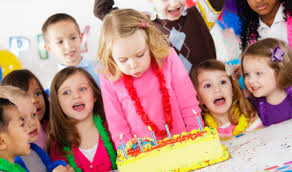
Plan some games.
These are the building blocks of a good child’s party, so start thinking up craft projects, look into renting an entertainer, or utilize the facilities at an outside venue. Look in your phone book or online for party rentals or places near you. For younger kids, have a loose schedule to keep things running.
- Don’t be afraid to go super theme-oriented. If you’re having a Wild West party, have them pan for gold in the sandbox. Conduct a scavenger hunt with theme-related clues and a final prize.
- Don’t be afraid to go super simple. Nowadays, kids aren’t playing the old school games they could be. Instead of having them all plop down in front of the Wii, have them Capture the Flag, play Red Rover, Blind Man’s Bluff, or have relay races.
- For older children, have more free time. The older the child, the less structured the party should be. Kids will likely want to do their own thing at one point or another. If they express this, don’t stress. More free time for you and the other parents!
Make party favors interactive.
Instead of giving them a bag of small toys that will get played with for three minutes and then shoved in a drawer, have them make the party favors themselves! The kids will feel more involved and like they were a part of the party.
- They could make potato print t-shirts, simple masks, jewelry, fishing rods, badges — the list goes on and on and on. This requires a bit more forethought, but will pay off in the long run.
- You could have this be the first activity — so children that come earlier have something to busy themselves with while the others slowly file in. Any late arriving child can take the necessary materials home with them if they’d like.
- Let the kids take home the decorations. This is an easy and quick idea if you have something with a general theme, like princesses or baseball. And it allows for minimal clean up!
Plan the party food.
When it comes to parties, one thing is timeless: cake. Will you bake one or buy one? Or two?! Cupcakes are easy and super trendy as well. Whatever you choose, either get the order in early or go grocery shopping for the ingredients ahead of time. Make the food theme oriented, too!
- Despite what logic dictates, cake isn’t enough. You’ll need food food too — make it easy on yourself and get some pizzas delivered or get a fast food restaurant or catering company to take care of everything. Finger sandwiches and lunch bags with sandwiches and fruit, jellos, or chocolate chip cookies are great choices, too.
- If it’s a nice day outside and you have a grill, kids love hot dogs and hamburgers. Don’t forget the buns, mustard, and ketchup!
- If there will be other parents or adults attending and watching over the kids, have food for them, too. They may not be so keen on chicken nuggets and Sprite.
Plan the party drinks.
Soda pop, lemonade, and juice are all pretty standard. And if you’ll be outside a lot, a cooler filled with bottles of water or cans of soda will surely be appreciated, especially if it’s hot outside. And, of course, milk goes great with cake. If it’s autumn or winter, have the kids play outside and come in for cider to warm them up.
- Have glasses (and cutlery in general) that are safe for the kids to use. Things may get broken — so don’t break out your fine china. Be prepared for a mess.
Plan the goodbye.
Give the other parents your cell phone number on the off chance they’re running late, early, or sending someone else to pick up their child. Establish protocol for the safety of every child.
- As the child leaves, take note. Have them say goodbye to everyone, gather their things, their party favor, and mentally check them off their list. Never let the child leave on their own or with an adult you don’t recognize.
